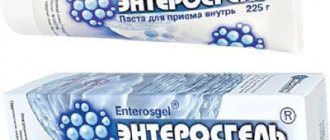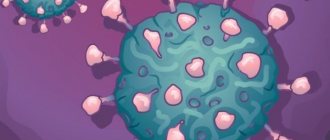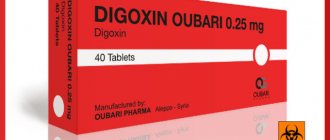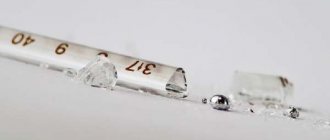What is the difference between poisoning and rotavirus infection
To understand whether poisoning or rotavirus caused intestinal disorders, you need to understand the theoretical differences between one and the other.
Poisoning is a malfunction of organs (and sometimes entire systems) due to the effects of poisons or bacteria that have entered the body, as well as intoxication by waste products of the latter. All this can cause significant harm to the immune system (depending on the cause and severity of the disease).
Rotavirus infection is an acute intestinal viral disease caused directly by rotavirus. The pathogen, once inside, begins to actively multiply, quickly disrupts intestinal function, leads to rapid dehydration and is gradually eliminated from the body during bowel movements.
The popular name for this disease is intestinal flu, the medical name is rotavirus gastroenteritis. The route of infection is oral-fecal, and in a hospital setting or among one group of people where there is a patient or a carrier, there is also a contact-household route.
With rotavirus there is a very high risk of infection between humans and humans, but with food poisoning there cannot be such a threat.
Differential diagnosis
To clarify the diagnosis, doctors prescribe additional examinations: blood, urine and stool tests.
In a general blood test, during an intestinal infection, the level of leukocytes may be increased due to neutrophils - this is a characteristic sign of a bacterial infection. When infected with rotavirus, white blood cells increase primarily due to an increase in the concentration of lymphocytes that actively fight the pathogen.
Analysis of urine
Signs of rotavirus infection in a urine test can only be indirect: dark color, ammonia smell, increased concentration of protein and leukocytes. In patients with food poisoning, urine tests usually remain normal.
Stool analysis
Bacteria and viruses can be detected in stool using electron microscopy. Polymerase chain reaction (PCR) is also used to confirm rotavirus infection. However, this study is expensive and requires sophisticated equipment and high professionalism of a laboratory doctor. Therefore, PCR is practically not carried out in routine practice.
There are also special rota tests for home use that can determine the presence of rotavirus in stool. However, they are difficult to find on the open market, so rapid tests are rarely used.
Bacterial infections
Rotavirus can be confused not only with food poisoning, but also with some bacterial infections - salmonellosis, dysentery. To make an accurate diagnosis, stool is inoculated onto nutrient media, on which colonies of microorganisms grow after a few days. At the same time, their sensitivity to antibiotics of different groups is assessed in order to determine further treatment tactics.
With rotavirus infection, the culture will be negative - bacterial colonies will not grow.
Difference in reasons for development
The difference between poisoning and rotavirus necessarily lies in the causes of each of these problems. Intoxication is caused by bacteria or toxins that enter the intestines. There, microorganisms begin their active life, and poisons are absorbed into the blood and spread to other organs, often affecting entire body systems.
The reason for this is low-quality food products, in the preparation, storage or transportation of which there were gross violations. After eating such products, everyone who ate them will be poisoned, and signs of intoxication will appear in the victims approximately simultaneously (on average after 2 hours).
Rotavirus gastroenteritis is caused by rotavirus that enters the body through contact of a sick person with a healthy person, i.e., the disease, unlike poisoning, is contagious. Transmission of the virus is the main reason for the development of the disease.
Once in the body, the pathogen multiplies very quickly on the inner walls of the intestine (mostly the small intestine). At the same time, the microvilli that line the walls shorten or disappear, and the intestines, so to speak, “go bald,” which leads to failures in the digestion and absorption of food.
Relapses of rotavirus infection are rare, and the immune system is not affected. But the disease in children, especially under 2 years of age, is much more severe than in adults. Rapid and severe dehydration of a small organism is more likely to lead to death, so it is very important to understand the difference between poisoning and rotavirus infection.
Prevention
There are certain recommendations that relate to prevention. You can avoid poisoning and intestinal infections as follows:
- Follow the rules of hygiene: wash your hands, do not use other people’s cutlery.
- Fruits and vegetables should be thoroughly cleaned. Also, when purchasing food products, you should pay attention to their quality, expiration date and storage conditions.
It must be remembered that rotavirus is most active in the summer. You can become infected with the pathogen even with a normal handshake. However, if you wash your hands thoroughly, you can eliminate the possibility of infection. In many cases, the cause of infection is a weakened immune system. Maintaining immunity involves maintaining a healthy lifestyle and taking special vitamin complexes.
Difference in Symptoms
Poisoning and rotavirus in their manifestations have much in common, but at the same time they are significantly different. And the main task of loved ones is to try to understand in time what kind of problem actually exists, especially if there are signs of intestinal disorders in the child.
Signs of rotavirus gastroenteritis
The following symptoms distinguish infection from poisoning:
- excessive dryness of all mucous membranes;
- weight loss per day;
- several days of high temperature from 38 ºC to 39 ºC;
- severe weakness, drowsiness;
- sunken eyes, discharge from them;
- dark urine (in severe cases - with blood);
- sharp pain and gurgling in the abdomen;
- coated tongue;
- refusal to eat;
- frequent severe vomiting;
- in the first days, multiple loose stools (up to 12-20 times a day) of a cheesy, yellowish consistency with greenish inclusions and a characteristic fetid sour odor;
- in the following days, the stool takes on a grayish tint and a consistency similar to clay.
It is vomiting and diarrhea that lead the body to severe dehydration. In addition, rotavirus differs in catarrhal symptoms (which is not the case with poisoning):
- coughing;
- redness of the throat and pain when swallowing;
- runny or stuffy nose.
With proper treatment, the disease goes away in 4 days, maximum - a week.
Signs of rotavirus infection in adults are not always so clear. Sometimes a sick person may not even suspect that he has the virus due to hidden symptoms (one-time diarrhea, a slight decrease in appetite, attributed to fatigue, etc.).
Signs of poisoning
Symptoms of poisoning in adults and children are generally similar, but due to age and differences in immunity, they may differ in severity:
- stomach ache;
- flatulence;
- vomiting, nausea and diarrhea.
These are just the main symptoms that appear in the intestines and indicate food poisoning after eating low-quality foods. When intoxicated with poisons, additional signs are observed:
- fever and chills;
- headache;
- pain in joints and muscles;
- weakness;
- vomiting and nausea;
- visual disturbances;
- disturbances in the functioning of the nervous system and brain functions;
- fainting;
- profuse drooling;
- decreased or increased muscle tone.
Due to vomiting and diarrhea, the body will also become dehydrated, which will lead to the following symptoms:
- severe thirst, dry mucous membranes;
- cold sweat;
- weakness;
- decrease in blood pressure;
- tachycardia;
- rare urination;
- weight loss.
How to distinguish poisoning by additional signs? This is characterized by a temporary decrease in pain in the abdomen after an attack of vomiting, whereas with rotavirus the pain persists.
An important difference between rotavirus infection and any poisoning will be the speed of the initial manifestation of symptoms: in the first case, the incubation period lasts 1-5 days, people gradually become infected from each other “along the chain” after contact. In the second, a single case or a simultaneous group outbreak after the joint consumption of a low-quality product appears within a matter of hours.
In mild cases of poisoning, the problem goes away on its own after 1 or 2 days. But if after this time the symptoms persist or increase, you should immediately consult a doctor.
Diet for rotavirus
A proper diet will allow you to quickly cope with water-salt imbalance and restore the body. An important rule is that you cannot overload the body, so meals should be fractional - in small portions, 150-200 g each. Allowed dishes include:
- apples baked in the oven with honey;
- crackers, recommended without added sugar;
- cereal porridge with water;
- vegetable puree;
- chicken bouillon.
During illness, you should exclude fried, fatty foods, freshly squeezed juices and soups from your diet until your health returns to normal. After 3-4 days, you can begin to introduce familiar dishes into the menu, but in small quantities. It should be borne in mind that the stomach is weakened and should not be overloaded.
Differences in treatment
It is very important to distinguish rotavirus infection from intoxication, because in their treatment there will also be similarities and significant differences:
- In case of intoxication, it is necessary to give an enema or rinse the victim’s stomach by drinking plenty of fluids and artificially inducing vomiting until the waters are clear. But one point is important here: for poisoned children under 2 years old, independent gastric lavage and provoking vomiting are contraindicated! For rotavirus infection, the procedure is useless, since the pathogen “operates” directly in the intestines.
- For food poisoning, after successful washing, sorbents are used to remove toxins: activated carbon, Enterosgel, etc., plus drugs that stop uncontrollable diarrhea. In the treatment of rotavirus infection, diarrhea is not always stopped, since the virus is eliminated from the body through feces, but in some cases antidiarrheals (Enterol, Stopdiar, etc.) can be prescribed.
- The heat caused by intoxication can be brought down. Rotavirus dies at temperatures above 38 ºC, so it can be reduced only at 38.5 ºC or in young children with intolerance to hyperthermia.
- For abdominal pain during intoxication, take painkillers (No-Shpa, Revalgin, etc.). For viral gastroenteritis - at the discretion of the attending physician.
Regarding medications, there is another very significant difference: viral infections are never treated with antibiotics under any circumstances! Despite their power, antibacterial drugs do not fight viruses and in this case will be useless. They can be prescribed for bacterial poisoning, but rotavirus is treated accordingly with antiviral agents.
General points in treatment
In both cases, fluid loss occurs in the body, so procedures aimed at replenishing it are vital.
For rehydration, droppers or solutions of Regidron, Gidrovit, Trihydron are prescribed for oral administration. But at the same time, no one canceled the importance of additional drinking - clean drinking water or sweetened tea. It is important to know what to do if you suspect rotavirus in children under 2 years of age. The process of dehydration in them occurs much more rapidly than in adults, so the child needs to drink a spoon every 5 minutes, despite vomiting.
After the cessation of vomiting and diarrhea in case of intoxication and rotavirus, drugs are included that restore the intestinal microflora (Linex, Hilak Forte, Bifidumbacterin, etc.). The damaged intestines are in dire need of help, and these remedies will provide it gently and carefully.
What do you have?
Rotavirus or poisoning are similar in many ways, and hoping for chance, people do not always rush to call a doctor. Due to late treatment, the number of deaths from dehydration caused by both intoxication and the virus has increased significantly in recent years. And it’s especially scary that children are the first to suffer here. Therefore, the very first symptoms should be the impetus for calling specialists in order to avoid really very serious problems.
How to treat - the most effective means
To treat rotavirus, the patient is prescribed drugs from the following groups:
- Medicines aimed at restoring water-salt balance. These include Regidron, Enterodes or Citroglucosolan. Necessary to prevent fluid loss.
- Sorbents, most often activated carbon . The purpose of its use is to remove toxic substances from the blood.
- Drugs aimed at restoring intestinal microflora. These include Linex, Acipol, Normobact and Atsilact.
- Antiviral drugs are needed to combat pathogenic pathogens and prevent the penetration of viral acid into the human body.
Features of diseases
For a child, and for an adult, both conditions are incredibly dangerous. Poisoning and rotavirus differ primarily in the causes of the disease, and finding out additional circumstances helps to more accurately determine the diagnosis. Infection with rotavirus infection occurs from a person who is the carrier of the infection, but poisoning will be a consequence of the ingestion of certain drugs, products or substances into the body. Among the features of rotavirus it is worth noting:
- immunity does not decrease when infected with rotavirus;
- Cases of relapse are extremely rare;
- the carrier of the infection does not always know about the presence of infection in himself.
In some situations, rotavirus infection is expressed quite weakly, and diarrhea with vomiting can be mistaken for a common gastrointestinal disorder, the consequences of poor nutrition, or basic fatigue.
Poisoning is provoked by completely different microelements, bacteria and microbes, as well as some dangerous toxins, most of which enter the body along with food during eating. The cause of poisoning may be:
- low product quality;
- low-quality packaging materials;
- failure to comply with sanitary and hygienic requirements during the packaging process;
- violated conditions for storing products and goods;
- insufficient level of heat treatment of products.
Any person is at risk of being poisoned, and the disease is not at all contagious, regardless of what exactly the person was poisoned with. However, poisoning can be collective if people consume low-quality products at the same time.










